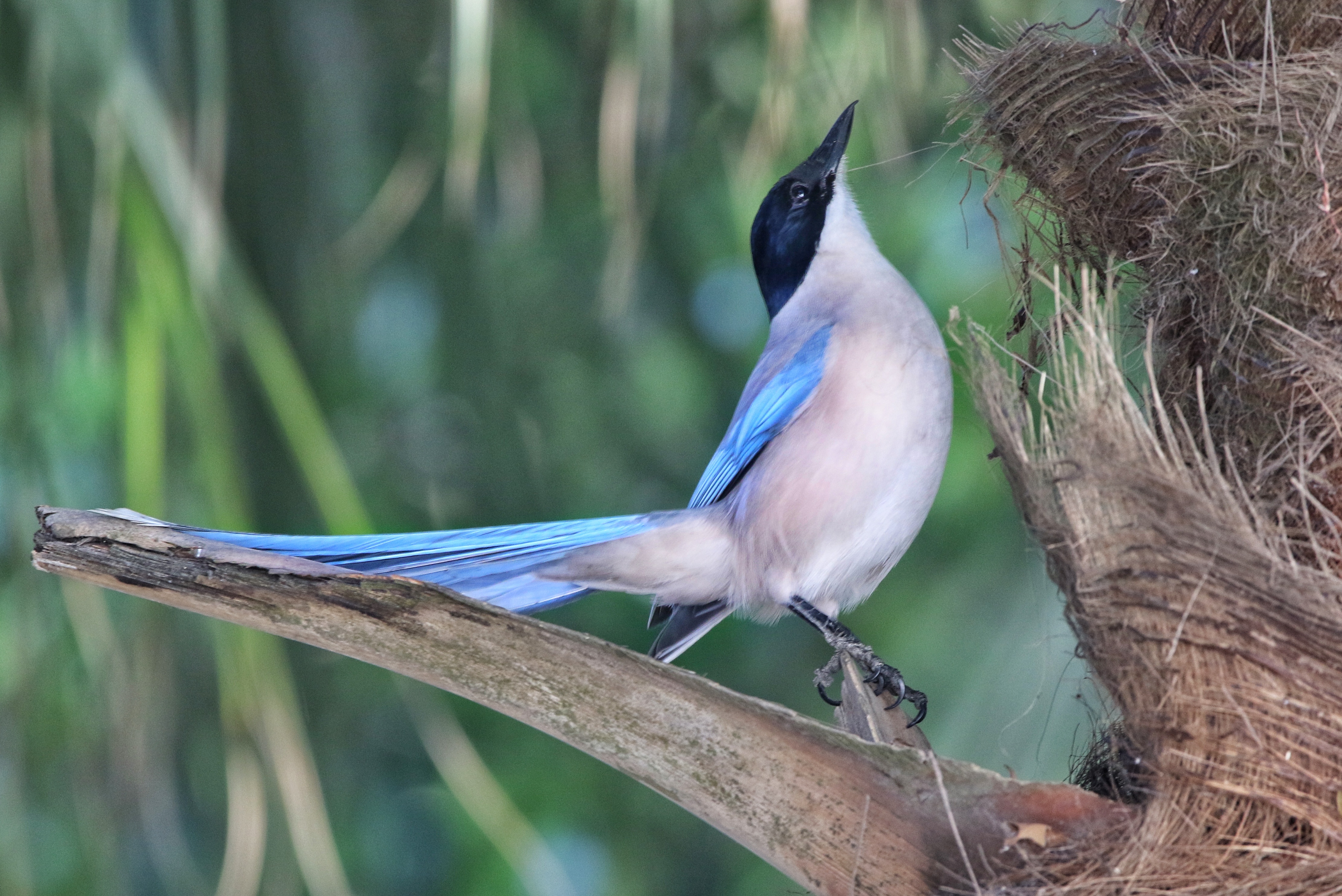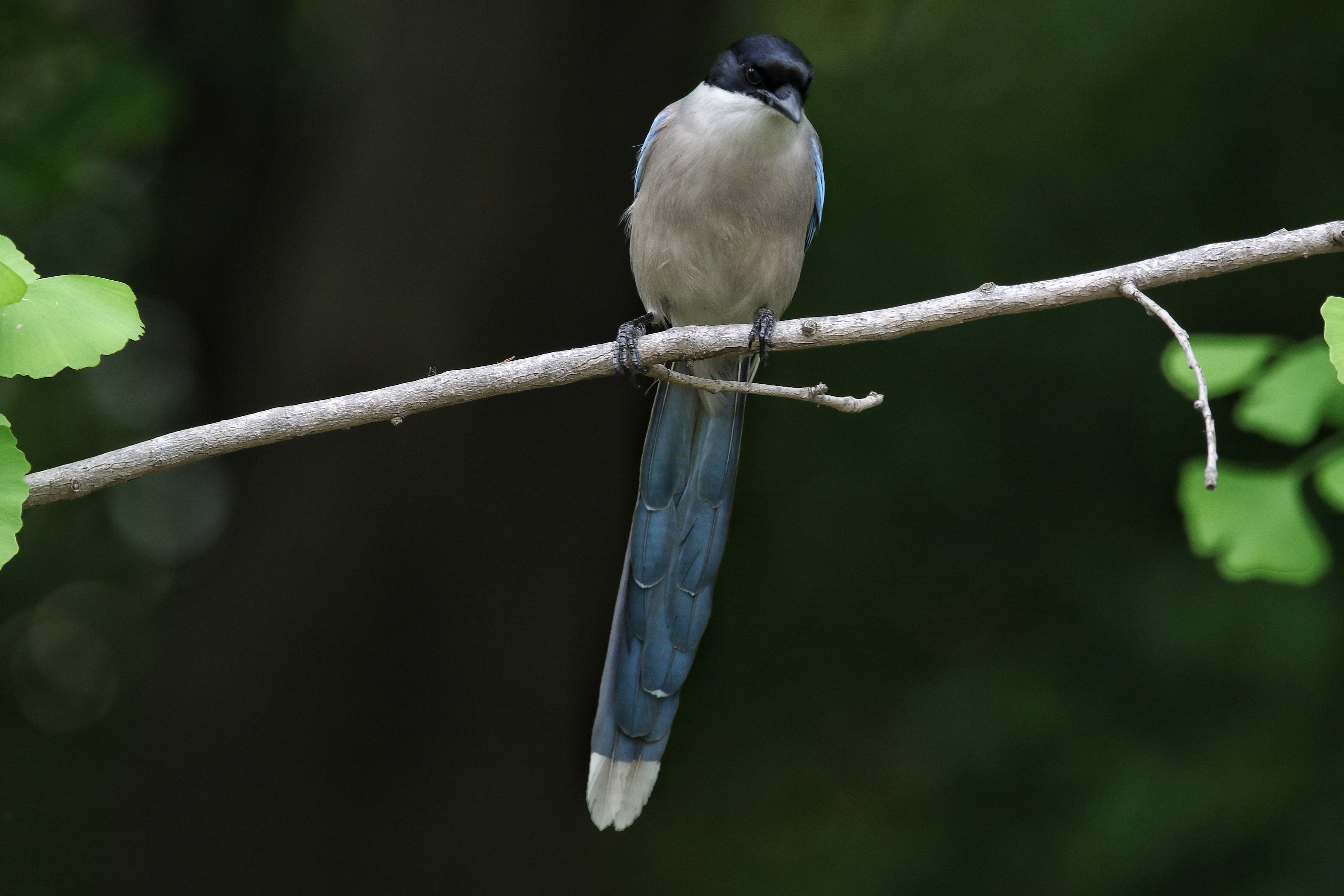The azure-winged magpie
Writer: Isaac Cohen | Editor: Liu Minxia | From:

An azure-winged magpie is seen on a branch at Shenzhen Bay Park, Nanshan District. Photos by Isaac Cohen
The azure-winged magpie (Cyanopica cyanus) is found in many parts of East Asia, including Shenzhen.
The azure-winged magpie
The azure-winged magpie (Cyanopica cyanus) is found in many parts of East Asia, including Shenzhen.
灰喜鹊是东亚地区常见留鸟,深圳亦可见。
This medium-sized bird measures around 40 centimeters in length. Its dazzling azure blue wings contrast beautifully with its black head. The rest of its body is predominantly white, with a touch of blue on its lower back. Its long, elegant tail adds to its overall gracefulness.
灰喜鹊体长约40厘米,灰蓝色的翅覆羽及头顶黑色的帽状色块是其重要的辨识特征,躯干灰白色,下体及尾部覆羽浅蓝色,尾甚长,外形优雅美丽。
Found in woodlands, parks and gardens, this bird is particularly fond of places with dense vegetation, which provide the bird ample opportunities for nesting and foraging. Still, your best chance to spot them is around Shenzhen Bay Park.
常出没、繁殖于林区、花园及市政公园的植被茂盛处,在深圳的个体则主要分布于深圳湾公园。
Rare visitors to Shenzhen in the past, these magpies have in recent years chosen to remain in the city year-round, adapting to the local environment.
灰喜鹊并非深圳的原生鸟类。近年来,逃逸或被放归的人工饲养个体逐渐适应了这座城市的环境,形成了稳定的本地种群,因此也被认定为深圳的留鸟。

An azure-winged magpie is seen on a branch at Shenzhen Bay Park, Nanshan District.
This omnivorous bird has a diverse diet, consisting of fruits, seeds, insects, and small vertebrates. Its adaptable feeding behavior allows the magpie to thrive in different habitats.
和其他鸦科鸟类一样,灰喜鹊是食谱广泛的杂食性鸟类,以水果、种子、昆虫及小型无脊椎动物为食,能够适应多种多样的栖息环境。
Breeding season for them typically begins in the early spring. The bird constructs intricate nests made of twigs, grass, and other plant materials in dense vegetation or trees, in which females lay a clutch of up to six eggs and then incubate them for about three weeks. Both parents feed and care for the chicks until they fledge and become independent.
灰喜鹊每年早春时节开始繁殖,筑巢于茂密的植被或树冠丛中,巢由藤蔓、草叶等植物性材料编制而成,精巧而复杂。雌鸟每窝产卵可达6枚,孵化约三周后,雏鸟破壳,再由亲鸟共同喂养直至能够离巢独立生活。
It plays a vital role in maintaining the balance of the local food chain. By consuming fruits, seeds, and insects, the magpie helps control insect populations while also assisting in seed dispersal, contributing to the growth and regeneration of vegetation. The nests they leave behind often become homes for other bird species, thuspromoting regional biodiversity.
灰喜鹊在本地食物链中扮演着重要的角色。它们食性杂,既吃水果种子,也吃昆虫,因此既能控制昆虫的种群数量,也能扮演重要的播种媒介,促进了植物种群的扩张与繁殖。此外,灰喜鹊的鸟巢牢固美观,所以某些鸟类会“慕名前来”并选择直接使用它们的弃巢来繁殖,无形中也丰富了栖息地的物种多样性。
The azure-winged magpie reminds us of the importance of preserving habitats and protecting the biodiversity of Shenzhen.
综上所述,我们更要保护好灰喜鹊等鸟类的栖息地,为维护深圳本地的物种多样性贡献自己的一份力量。